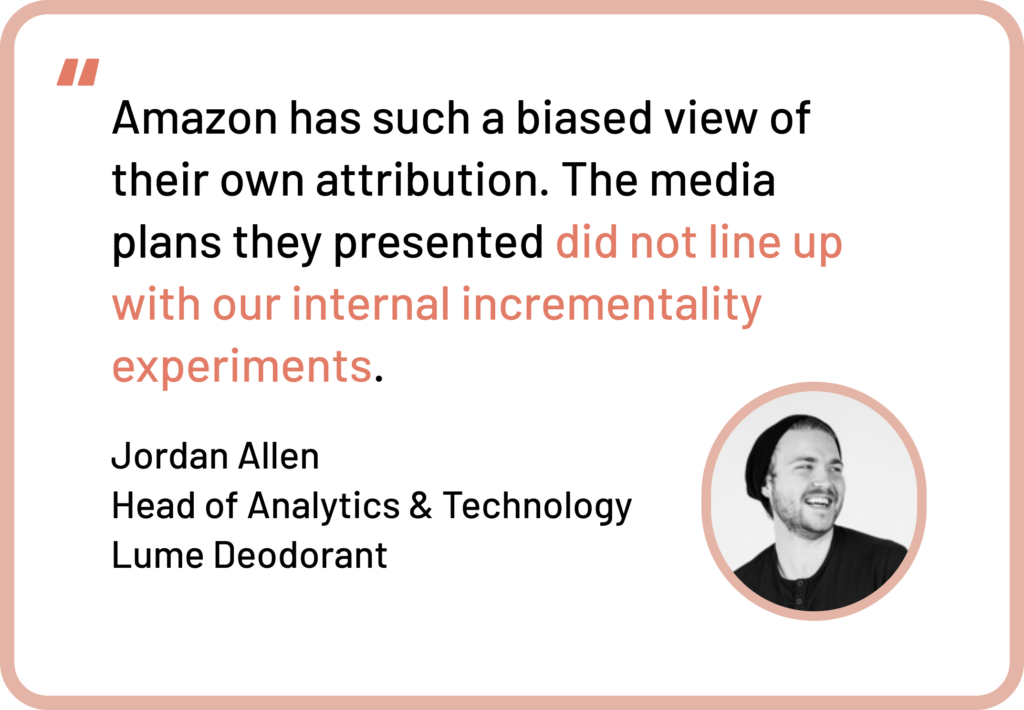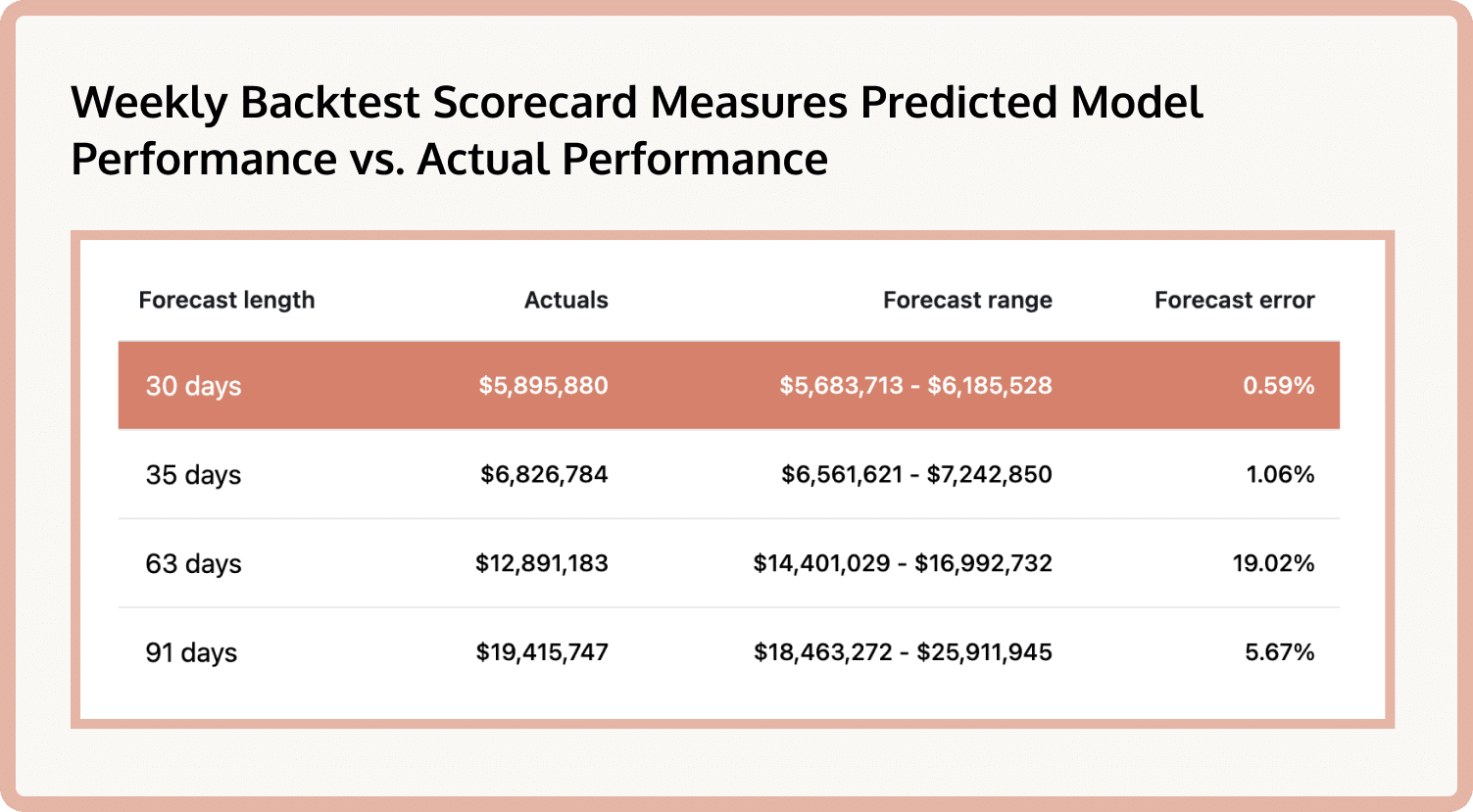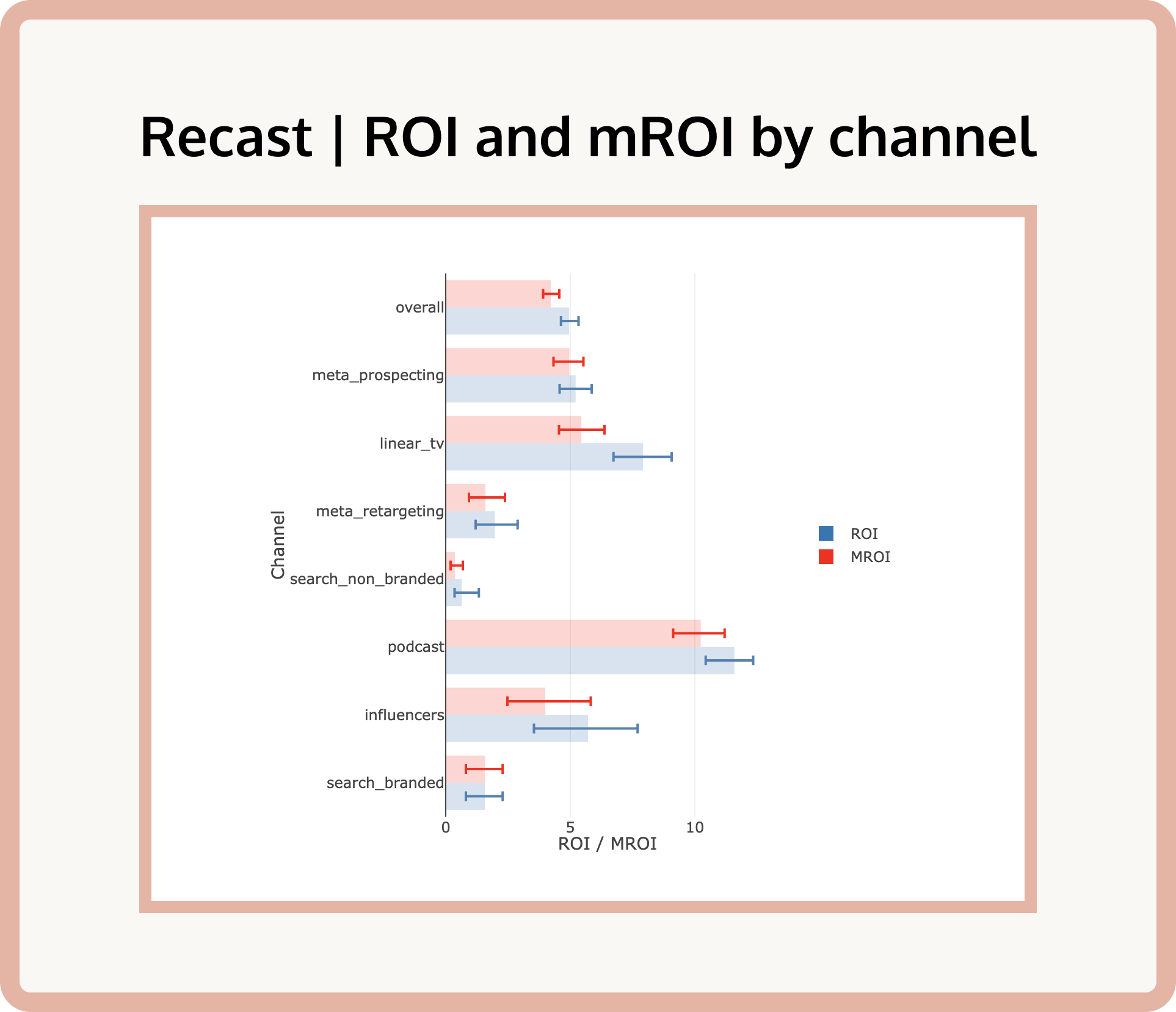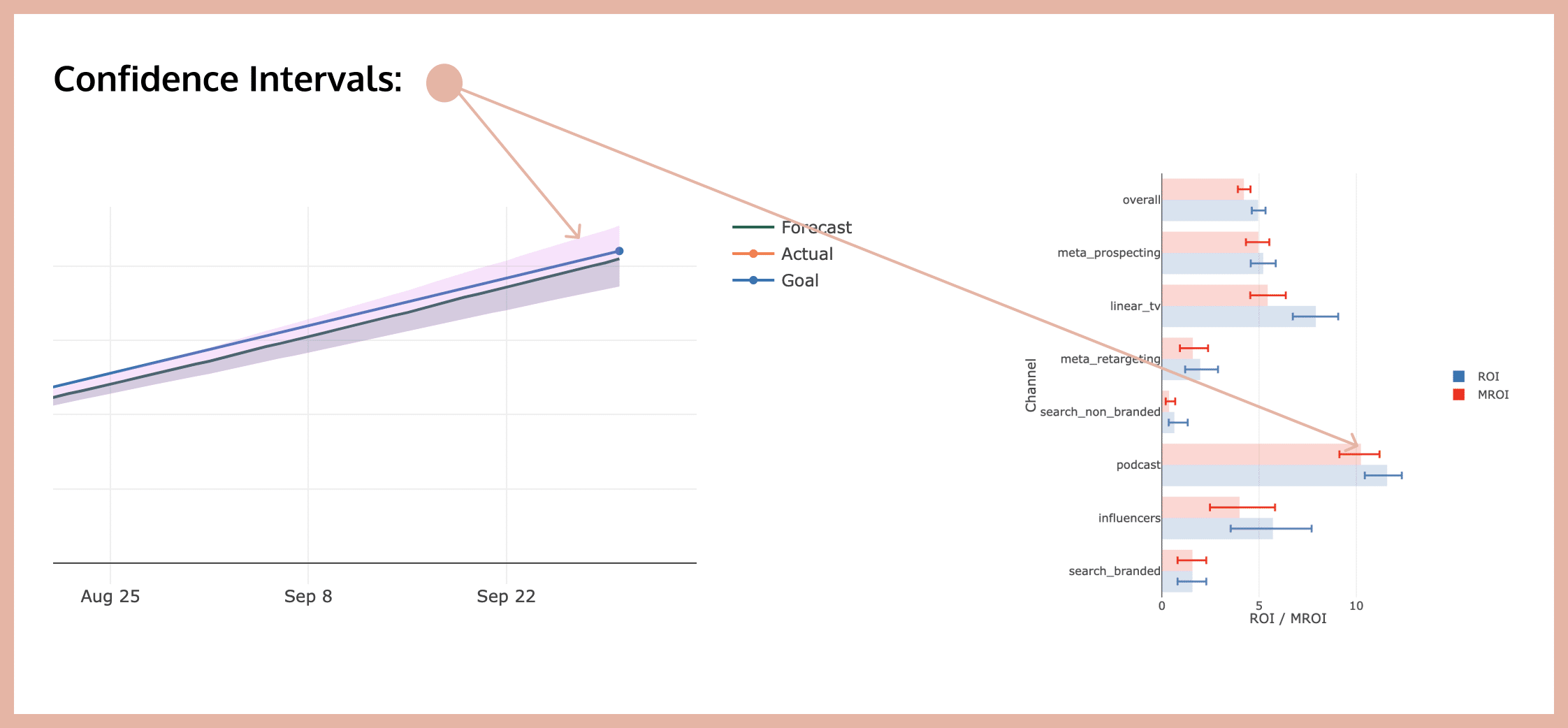Case Studies > Lume
Lume turned to Recast for always-on incrementality measurement.
The Lume team is deeply focused on incrementality, which meant their expanding channel mix, suite of products and lines of distribution presented more than a few media measurement challenges.
Lift testing, with its slow pace of learnings and natural limitations on certain channels, only got Lume so far. They turned to Recast for always-on incrementality measurement, valuing the platform’s speed, rigor and transparency.

Lume specializes in whole body odor control products – deodorants, wipes, laundry sprays, and more – all developed by Shannon Klingman, MD (OB/GYN). Their products all share a common goal: helping customers live their best lives, unencumbered by body odor.
To say Lume’s products have been well-received would be an understatement. Since their founding in 2017 with a D2C website, they have rapidly expanded their lines of distribution to include Amazon, Target, Walmart, H-E-B, and Meijer – including the launch of their men’s brand Mando.
Lume’s marketing team is sophisticated, and knew that this growth – in customer base, advertising channels, and distribution channels – would present new and complex media measurement challenges. In response, Lume quickly built out their media measurement stack, which in 2022, included the addition of Recast’s always-on Media Mix Modeling platform.
Lume’s relationship with Recast began as an exercise in better understanding the drivers of Amazon and Retail performance, but has quickly become a much deeper partnership. The Lume team now relies on Recast as the core input to their internal marketing decision-making system.
Before Recast: Rapid Growth Presents Complex Measurement Challenges

Lume’s initial attribution stack was right-sized for their Direct-to-Consumer business: they used a mix of Google Analytics reporting and How did you hear about us? (HDYHAU) surveys to optimize their media mix and understand channel-level performance.
Things changed when Lume started selling on Amazon. This added a second line of distribution to their business, and soon, created a suspicion that their Direct-to-Consumer ads weren’t just driving website purchases, but were also driving a halo effect on Amazon store sales.
To make matters worse, Lume also sensed that Amazon’s internal reporting tools – and the media plans generated by them – were heavily favoring Amazon’s own ads and overstating their incremental impact on performance.

To address these challenges, the Lume team quickly adapted their approach to marketing measurement. They onboarded a multi-touch attribution partner and began focusing more on incrementality. They also started running geolift experiments and other randomized control trials.
While these attribution and experimental methods were helpful to Lume, they weren’t perfect solutions. Specifically, Lume was still left to deal with a few important problems:
- Pace of learnings: Lume couldn’t run incrementality experiments every week for every media channel, which made getting on-demand incrementality learnings a challenge.
- Experimentation limits: Incrementality experiments weren’t feasible at all on certain hard-to-measure channels (like podcasts or influencers), making Lume hesitant to invest in them.
- Further expansion: Despite these testing challenges, Lume continued to grow. They expanded their media mix and moved into Retail, which presented even more daunting measurement challenges than D2C and Amazon.
Lume needed a solution that could both increase the pace of their incrementality measurement learnings and increase the breadth of channels that this measurement covered. They knew that a Media Mix Modeling (MMM) solution was best suited to address these challenges, and chose the Recast platform after surveying the MMM landscape.

With Recast: Always-On Incrementality Measurement
The Lume marketing team is focused on finding true incrementality in their marketing mix and thinks hard about the measurement tools that they use to answer different types of marketing science questions. This makes the output of their Media Mix Modeling platform especially important:
- Lume didn’t want a platform that took in marketing data, analyzed it within a black box and spit out vague “answers” on the other side.
- Lume did want a platform that was rigorous, highly transparent, and expressed uncertainty with confidence intervals for all calculated point estimates.
These criteria have made the Recast platform a natural fit for Lume. Recast automatically verifies the accuracy of all Media Mix Models with in-platform model accuracy scorecards. Confidence intervals for all point estimates and forecasts also come standard in Recast’s suite of goal-tracking, forecasting, insights and optimization tools.

In practice, the Lume team pays close attention to Recast’s calculations of marginal ROI and saturation to understand the scalability of their online and offline media channels.
They’ve also chosen to create models for each of their lines of distribution so they can understand the incremental impact – and halo effects – that their marketing efforts have on their Direct-to-Consumer, Amazon and Retail businesses.

These analyses take center stage in weekly meetings where the Lume performance marketing team opens the Recast platform to assess marketing performance and inform channel-level budget and optimization decisions.
Beyond optimizing evergreen channel budgets, Lume also uses Recast to gain confidence in their investments into offline media channels (the same ones they were historically hesitant to test into).

What helps the Lume team enjoy this level of success with Recast? Two notable characteristics stand out:
- The Lume team are active participants in the health of their Media Mix Models.
- The Lume team is well-versed in thinking about the uncertainty associated with causal inference.
Lume runs lift tests whenever possible and sends these results to Recast to help calibrate their models. This also helps reduce the uncertainty associated with measurement of certain channels. Note: Recast is fully compatible with all lift testing tools, both open-source and those provided by vendors or consultants.
The Lume team also pays close attention to the confidence intervals that are presented with all Recast point estimates, forecasts and tracked goals. This helps build confidence in the budget changes they make with Recast’s recommendations, and highlights channels that are good candidates for lift testing to reduce uncertainty.

Looking Ahead: Growing with Confidence in Marketing Measurement
With confidence in their Media Mix Models, the Lume team has big plans to continue their expansion into hard-to-measure channels – particularly for their men’s brand Mando, which they recently began modeling with Recast.
But perhaps more importantly, the broader Lume organization is focused on shifting the construction of their internal attribution model. What began as a bottoms-up model that relied heavily on user-level data is now moving towards a top-down approach that will use Recast data as its primary input.
What gives Lume so much confidence in the output they receive from Recast? In addition to the platform’s automatic validation tools and model accuracy scorecards, Lume has come to rely on guidance from the Recast team.
Lume notes that Recast’s in-house team is far more engaged than previous vendors they have worked with, and particularly appreciates the weekly performance update emails that come standard with all Recast models. Jordan Allen, Lume’s Head of Analytics and Technology, sums up the relationship best:

Are you dealing with complex media measurement challenges like Lume? We’d love to show you around our fast, rigorous and transparent MMM platform.